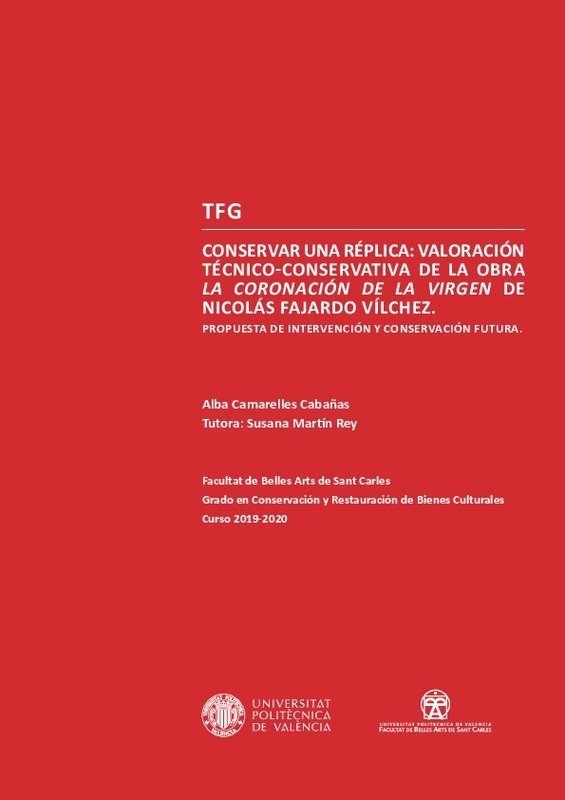JavaScript is disabled for your browser. Some features of this site may not work without it.
Buscar en RiuNet
Listar
Mi cuenta
Estadísticas
Ayuda RiuNet
Admin. UPV
CONSERVAR UNA RÉPLICA: VALORACIÓN TÉCNICO-CONSERVATIVA DE LA OBRA 'LA CORONACIÓN DE LA VIRGEN' DE NICOLÁS FAJARDO VÍLCHEZ. PROPUESTA DE INTERVENCIÓN Y CONSERVACIÓN FUTURA.
Mostrar el registro completo del ítem
Camarelles Cabañas, A. (2020). CONSERVAR UNA RÉPLICA: VALORACIÓN TÉCNICO-CONSERVATIVA DE LA OBRA 'LA CORONACIÓN DE LA VIRGEN' DE NICOLÁS FAJARDO VÍLCHEZ. PROPUESTA DE INTERVENCIÓN Y CONSERVACIÓN FUTURA. Universitat Politècnica de València. http://hdl.handle.net/10251/158097
Por favor, use este identificador para citar o enlazar este ítem: http://hdl.handle.net/10251/158097
Ficheros en el ítem
Metadatos del ítem
| Título: | CONSERVAR UNA RÉPLICA: VALORACIÓN TÉCNICO-CONSERVATIVA DE LA OBRA 'LA CORONACIÓN DE LA VIRGEN' DE NICOLÁS FAJARDO VÍLCHEZ. PROPUESTA DE INTERVENCIÓN Y CONSERVACIÓN FUTURA. | |||
| Autor: | Camarelles Cabañas, Alba | |||
| Director(es): | ||||
| Entidad UPV: |
|
|||
| Fecha acto/lectura: |
|
|||
| Resumen: |
[ES] El presente trabajo se centra en el análisis de la obra del pintor Nicolás Fajardo Vílchez La Coronación de la Virgen . Se trata de una réplica del último cuadro religioso ejecutado por Diego S. Velázquez, donde puede ...[+]
[EN] The present work focuses on the analysis of the work of the painter Nicolás Fajardo Vílchez "The Coronation of the Virgin". It is a replica of the last religious painting executed by Diego S. Velázquez, where Fajardo's ...[+]
|
|||
| Palabras clave: |
|
|||
| Derechos de uso: | Reserva de todos los derechos | |||
| Editorial: |
|
|||
| Titulación: |
|
|||
| Tipo: |
|
recommendations
Este ítem aparece en la(s) siguiente(s) colección(ones)
-
BBAA - Trabajos académicos [5086]
Facultad de Bellas Artes







